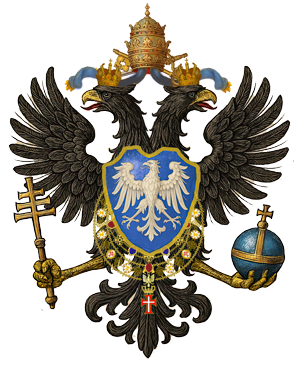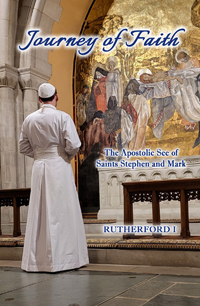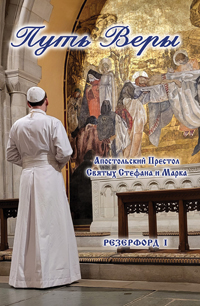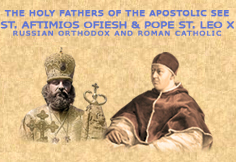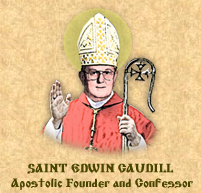|
History of the United
Roman-Ruthenian Church
|
||||||||||||||||||||||||||||||||||||||||||||||||||||||
| The Holy Apostolic See of the United Roman-Ruthenian Church is the true
visible Orthodox head of all Latin Christians, in addition to all
others under her sacred mantle of care. The Church serves as the
Orthodox Old Catholic jurisdiction for the historic lands of the
Western Patriarchate and Holy Rus’. We are the Eastern Roman Church with Latin heritage, the continuation of the Apostolic faith where East and West meet. Our mission is to preserve and renew the Orthodox-Catholic faith in its full inheritance. Read more at this article and this article. |

WHO ARE THE PEOPLE OF THE UNITED ROMAN-RUTHENIAN CHURCH?
Find out by following this link!
Key readings about the Roman-Ruthenian Church and State.
PRINCIPLE PATRONAL FEAST
The Most Holy Patriarchal Basilica of Santa Maria Antiqua

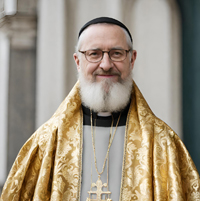
The United Roman-Ruthenian Church: A Symbol of Unity and Tradition
Where Ancient Traditions Unite in HarmonyRead more about our vision, mission, and core values by following this link.
The
United Roman-Ruthenian Church is a unique and diverse autocephalous
(independent) religious institution that brings together two distinct
Christian traditions – Orthodoxy
and Catholicism. This
unification
has not only fostered a sense of Christian brotherhood among
its
followers but has also created an environment where ancient traditions
and cultures coexist harmoniously.
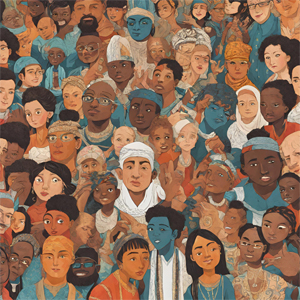
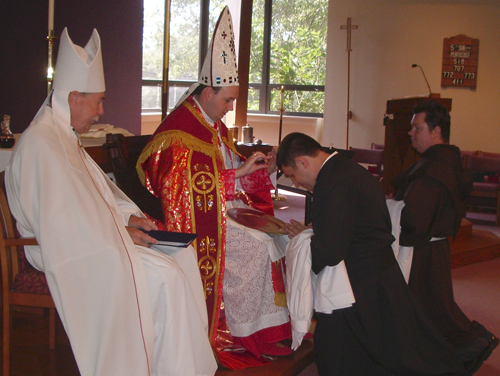
New clerics being admitted to the clerical state through the administration of First Tonsure.

Above: Members of the Pontifical Court of Rome-Ruthenia, in a moment of Apostolic fraternity with the late Pope Francis of Rome. While the autocephalous United Roman-Ruthenian Church and the Vatican Church are distinct in canonical jurisdiction and doctrinal trajectory, they share, in their roots, the Apostolic inheritance of Peter. remains rooted in the same Apostolic flame, now carried forward by those called to preserve it. This moment underscores an historical moment that serves as visible witness to the unbroken spiritual lineage we uphold. Indeed, the United Roman-Ruthenian Church preserves its integrity where others have embraced innovation. In this sense, we are not ‘another church,’ but the continuation of the original one: faithful to the Apostles, independent in governance, and rooted in both Latin and Byzantine heritage. The URRC carries forward its Petrine mission, not by claim, but by providential inheritance, unbroken in substance.
Read more here about the Roman-Ruthenian Papacy.
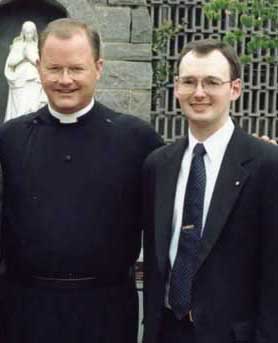
His Holiness Pope Radislav I (right), then as a young layman on the occasion
of his confirmation/Chrismation in the Roman Church, administered
by the Rev. Jay Scott Newman, JCL (left), later Chancellor
of the Roman Catholic Diocese of Charleston, USA — a sacramental moment
of enduring significance in the journey of the United Roman-Ruthenian Church.
Origins of the Church
The origins of the
United
Roman-Ruthenian Church can be traced back to the very beginning of
Christianity; to Rome, to Byzantium, Syria, and India, and to
Eastern Europe. The result today is a distinct branch
of Christianity that is both Eastern and Latin, Orthodox and
Catholic.
Follow this link to see the historical timeline of the Church.

A solemn procession.
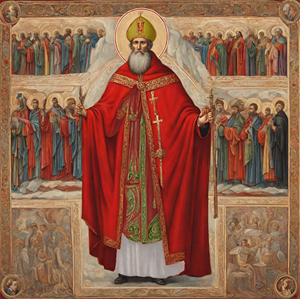
St. Peter the Apostle vested as a Gallo-Russo-Byzantine Bishop.
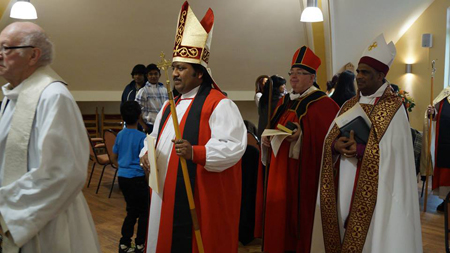
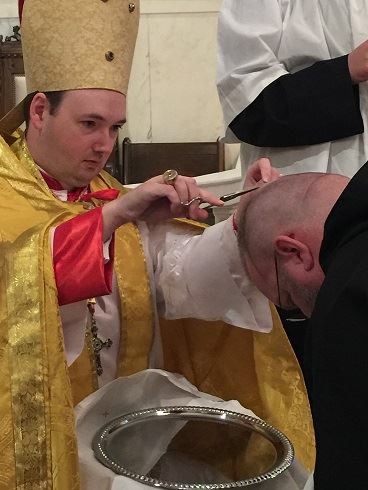
Admission of a new cleric through the administration of First Tonsure.
Preservation of Traditions and Liturgy
One of the notable aspects of this union is the preservation of both traditions within the liturgy. The United Roman-Ruthenian Church incorporates elements from Latin, Byzantine, and Syrian spirituality, ensuring that followers can engage with their faith in a way that is meaningful to them. The Eucharistic celebration, for example, includes elements such as incense, icons, and chant, which are essential components of Byzantine worship. By embracing elements from both traditions, this church offers a vibrant worship experience that resonates with people from diverse backgrounds.
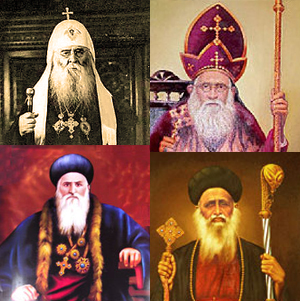
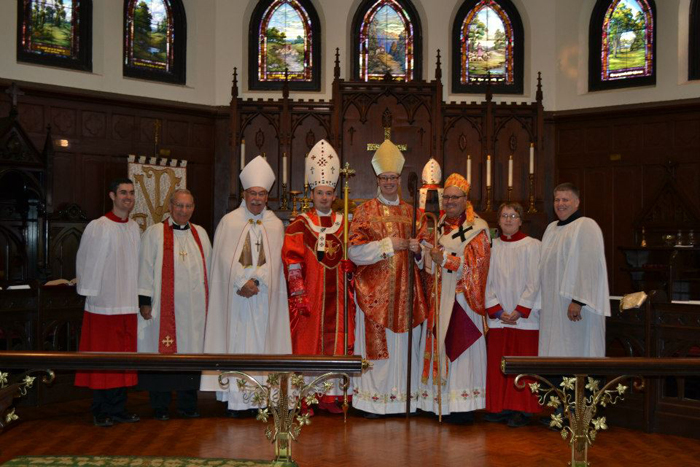
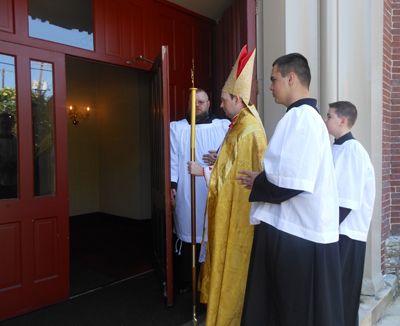
A newly-ordained Porter symbolically opens the
church door as part of the ritual of ordination.
Cultural Diversity
What makes the United Roman-Ruthenian Church truly remarkable is that it allows for cultural diversity within its congregations, fostering a sense of belonging among its followers while acknowledging their distinct cultural backgrounds. By bringing together two different Christian traditions, the United Roman-Ruthenian Church promotes dialogue and understanding between various branches of Christianity. It serves as an example of how different traditions can come together in pursuit of a common goal - traditional worship and the timeless faith of the Holy Gospels.
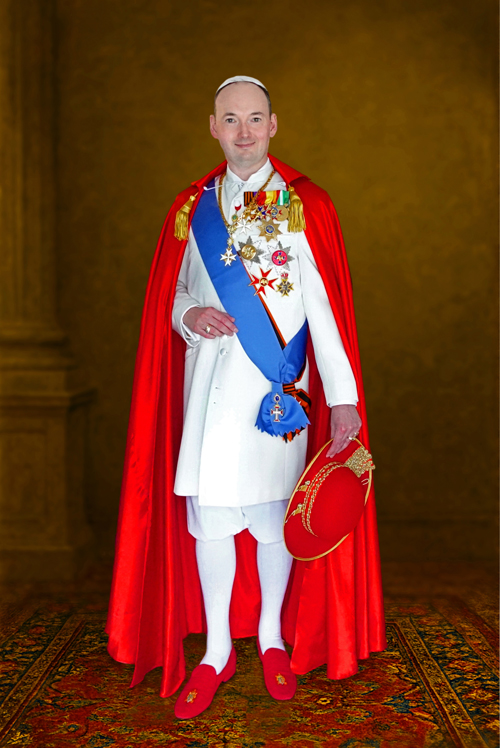
His Apostolic Highness
the Roman-Ruthenian Pope in traditional abito corto
wearing the decorations of the
orders of the Roman-Ruthenian Church and State.
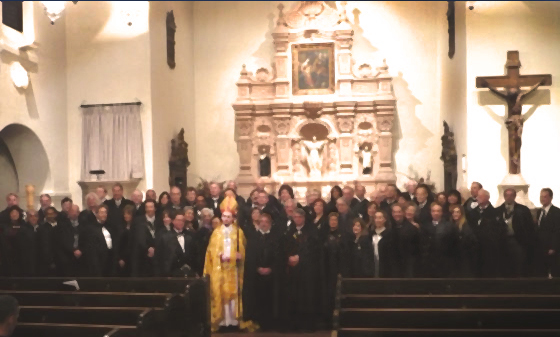
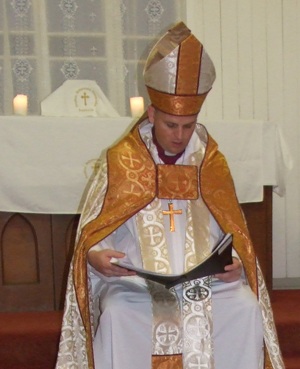
The Most Rev. Peter McInnes, Capitular Archbishop an Primate of the Australian Province
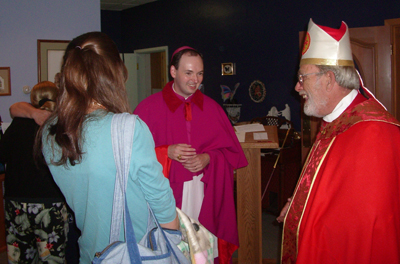
A light moment before a liturgy.
The Church's commitment to unity extends beyond its services. It actively promotes interfaith dialogue, fostering understanding and respect among different religions. Through this outreach, the United Roman-Ruthenian Church has become a symbol of hope for those seeking peace and harmony in their communities.
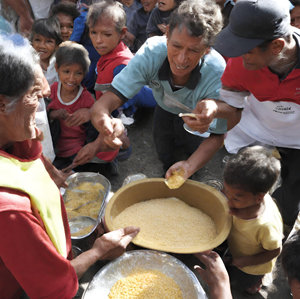
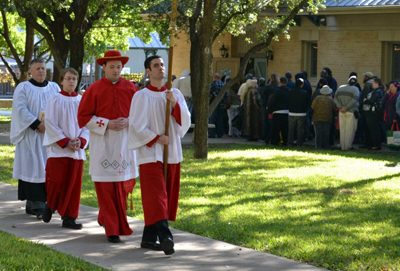
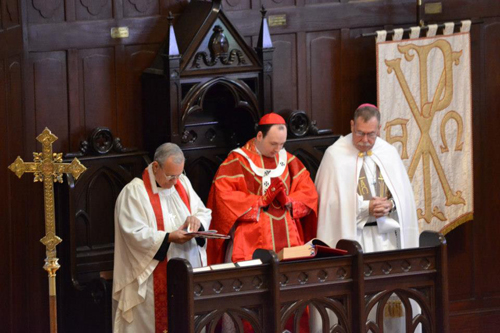
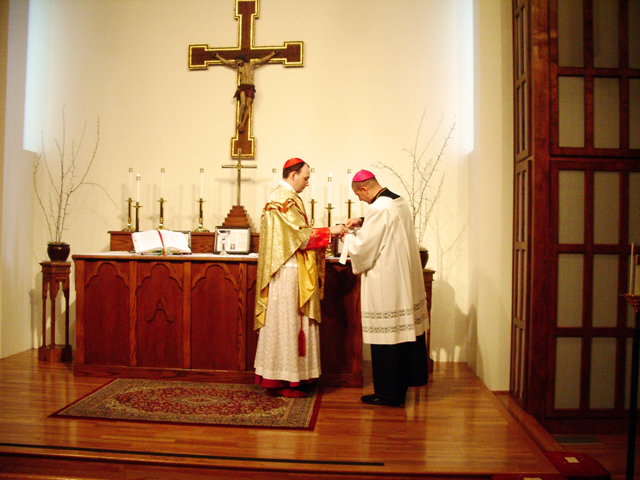
H.A.H. Pope Radislav
(then Cardinal Patriarch of St. Stephen) celebrating the United
Roman-Ruthenian Church's Anglo-Roman (Tridentine) Rite, assisted by
H.G. the Most Reverend Chandler Holder Jones
Role in Preserving Cultural Heritage
Furthermore, the Church plays an integral role in preserving cultural heritage. Its designs, traditions, and customs showcase stunning blends of Western European Gothic and Baroque influences with intricate Byzantine and Russian designs, creating awe-inspiring experiences. The Church's traditional art tells stories passed down through generations, connecting present-day worshippers with their ancestors' rich cultural tapestry.
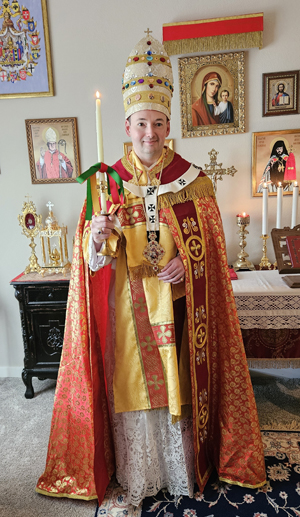
His Apostolic
Highness
the Prince-Bishop at a celebration of the Paschal (Easter)
liturgy
according to the Gallo-Russo-Byzantine Rite of the United
Roman-Ruthenian Church.
Contributions to Global Christian Unity
The United Roman-Ruthenian Church stands as a testament to unity with diversity in an era of division. Through its incorporation of Latin, Byzantine, Eastern European, and Syrian traditions, it provides a space where followers can engage with their faith in a meaningful way. This union not only preserves the rich cultural heritage of its congregations but also promotes dialogue and understanding among different Christian traditions.With its rich history and unwavering commitment to faith, this church serves as a beacon of hope, inspiring countless individuals across generations.
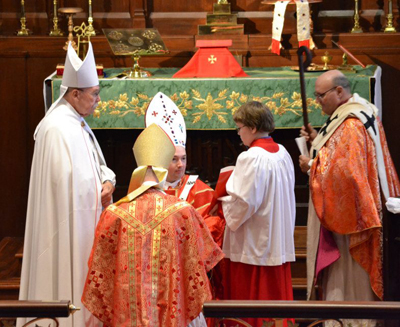
At the consecration to the episcopate of
H.E. the Rt. Rev. Msgr. Ryan Lozano,
Bishop of the Southwest (2012-2013)
For
those who seek solace in times of hardship or seek guidance on their
spiritual journey, the United Roman-Ruthenian Church offers steadfast
support. (Who are the people of the
Church? Find out here!) The members of its
clergy are known for their
compassion,
wisdom, and dedication to helping others navigate life's challenges. The
United Roman-Ruthenian Church's ability to bridge religious divides,
preserve cultural heritage, and provide spiritual guidance makes it a
cherished institution.
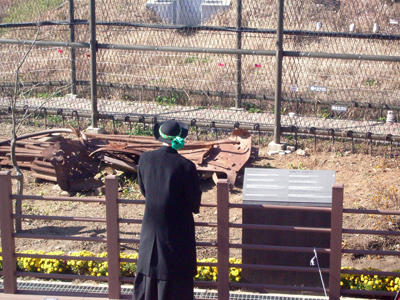
An ecclesiastical visit to the Demilitarized Zone in Korea.
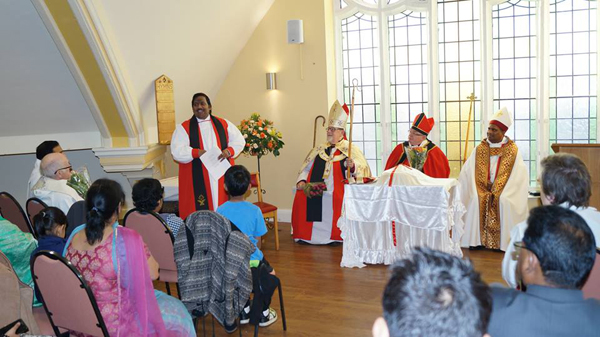
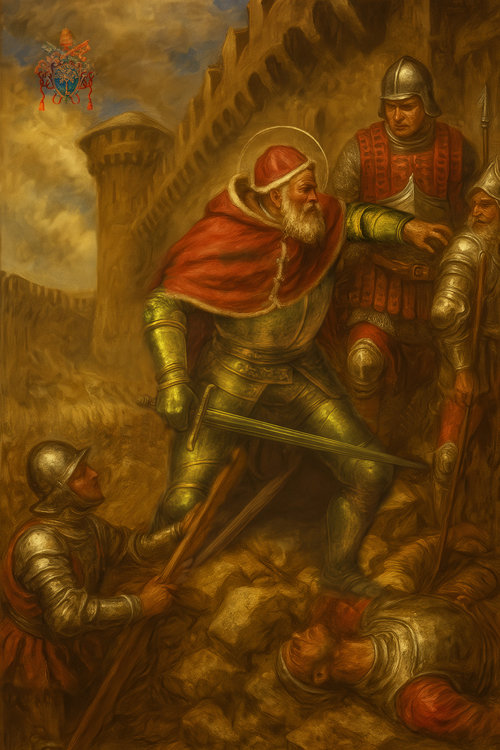
Pope Saint Julius II of Rome at the Battle of Mirandola
(Art by the Pontifical Apostolic Library)
Read more about our vision, mission, and core values by following this link.
Want to get involved? Email us here.
Key readings about the Roman-Ruthenian Church and State.
Or visit How to Join the Church.
Historical and Canonical Legitimacy
Read more here.
Temporal Rights
Read more here.
Follow this link to learn about the Principal Symbols of the Church.
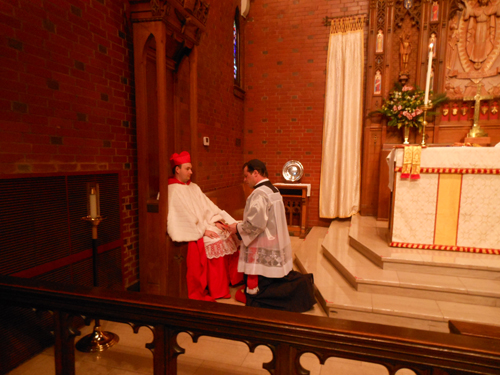
A seminarian kneels at the throne to take the oath of ordination.
Modern Civil States with Ancient Heritage Perpetuated by the Pontifical Imperial State
| Albania | Algeria | Andorra | Armenia |
| Austria | Azerbaijan | Belarus | Belgium |
| Bosnia and Herzegovina | Bulgaria | Croatia | Cyprus |
| Egypt | France | Georgia | Germany |
| Great Britain | Greece | Hungary | Iran |
| Iraq | Israel | Italy | Jordan |
| Lebanon | Libya | Lichtenstein | Lithuania |
| Luxembourg | Macedonia | Moldova | Montenegro |
| Morocco | Netherlands | Palestine | Poland |
| Portugal | Romania | Russia | Saudi Arabia |
| Serbia | Slovakia | Slovenia | Spain |
| Switzerland | Syria | Ukraine | Tunisia |
| Turkey |
Would you
like more detailed history?
We invite you to keep reading below!
Detailed History of the United Roman-Ruthenian Church
The
Holy Apostolic See of
Sts. Peter, Andrew, Stephen, and Mark (United Roman-Ruthenian Church) is an Apostolic
church of ancient origins and Orthodox and Catholic
heritage. The Church, today an
ethno-religious minority, is rooted in the ancient Apostolic Churches
of Rome, Constantinople, Syria, Russia, Alexandria, and Armenia and
represents a rare convergence of Apostolic faith and tradition that is
both Orthodox and Catholic, both Western and Eastern. Though the Church
stands on its own, it has received confirmation of its autocephalous
and canonical status from various ecclesiastical and secular
authorities over the years. (See also the legacy of the Independent Catholic Church
International, Anglican Diocese of the Southwest, and multinational
Orthodoxy.)
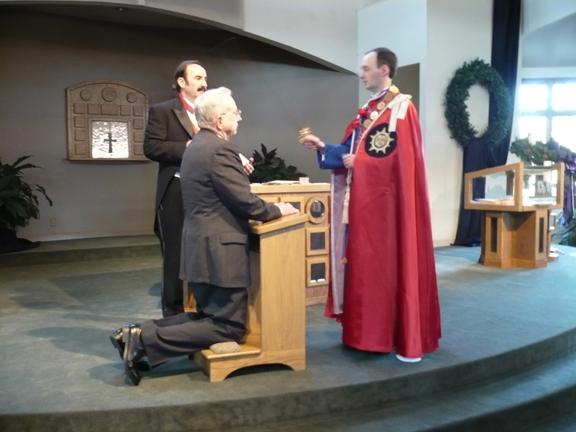
Conferral of Knighthood by H.A.H. the Prince-Bishop of Rome-Ruthenia.
The church's historical temporal wing, the Pontifical Imperial State of Rome-Ruthenia, is in hereditary descent from Rome and Russia and, like the United Roman-Ruthenian Church, in Apostolic Succession from Saints Peter, Andrew, Thomas, Thaddeus, and Bartholomew. It is ecclesial heir to the Roman Empire and Old Russian State. Through the Pontifical and Imperial Household and through the Merovingian Dynasty, protectors of the Gallican Rite of the Church, it descends from King David of Israel and King Solomon, ancestors of the Incarnate Jesus Christ. Today the United Roman-Ruthenian Church and Pontifical Imperial State constitute an ethno-religious nation without political territory and a state unto itself, representing people across multiple modern political countries.
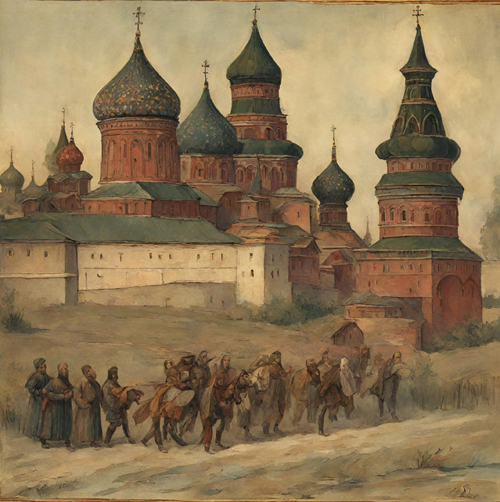
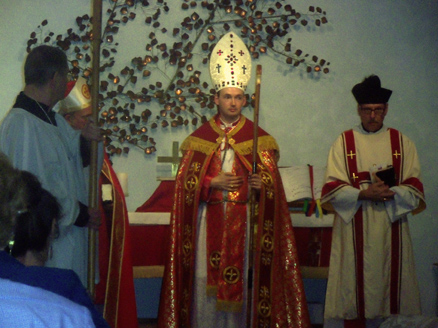
The Apostolic Blessing
being given by H.A.H. the Roman-Ruthenian Pope, assisted by H.E. the
Rt. Rev. Bishop Dennis Massey and the Rev. Gary Graveline.
EASTERN AND WESTERN HERITAGE
The United Roman-Ruthenian Church is among those few churches in the world that are privileged to branch in Apostolic succession from the Roman Catholic, Russian Orthodox, Greek Orthodox, Old Catholic, Melkite Catholic, Syrian Antiochian Orthodox, Syrian Malankara, Armenian Orthodox, Coptic Orthodox, Armenian Uniate, Melkite (Greek) Catholic, and Chaldean (Babylonian/Iraqi) Catholic Churches. The most recent Patriarchs of ancient geographical Churches from which we descend are both from the 20th century: Sergei, Patriarch of Moscow (Russian Orthodox) and Yousef VI, Patriarch of Babylon (Chaldean Catholic Church in Iraq). Part of our Roman succession is held in common with 95% the modern Vatican Church (Roman Communion) today, but the United Roman-Ruthenian Church also has much older lines as well, including the famous lines of Medici, Barberini, and Borghese. As a Church of united Apostolic heritage spanning East and West, it evokes memories of the Church before the Great Schism one thousand years ago and points to a Christian unity that often seems today like an elusive goal.
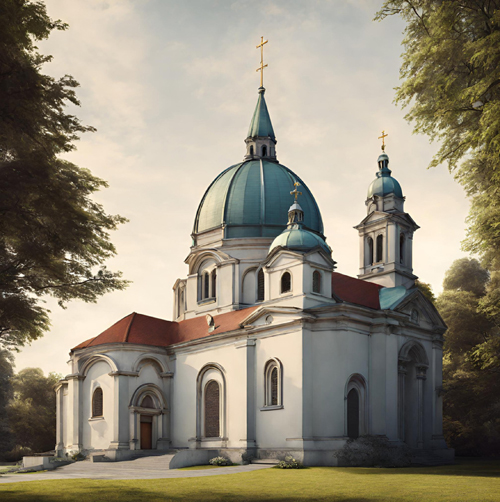
See also the Yugoslavian legacy of the Church.
Roman Principate & Pontifical Roman State
Pontifical Kingdom of Ruthenia
Roman-Ruthenian Nobility Association
Read more about our vision, mission, and core values by following this link.
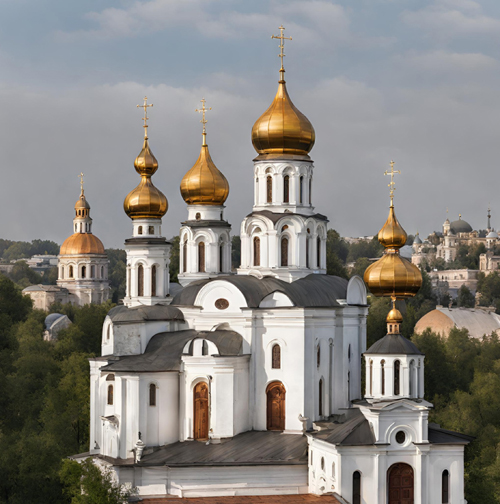
A SPIRITUAL AND CULTURAL
FORCE FOR PAN-SLAVIC ROMAN UNITY.
Find
out more here.
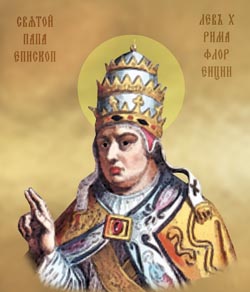
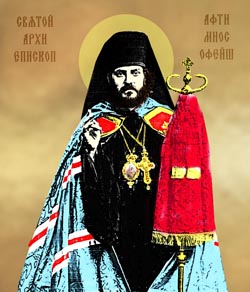
The Holy Fathers of the Apostolic See
Left: Pope St. Leo X (Roman Catholic)
Right: Archbishop Aftimios Ofiesh (Russian Orthodox)
(DISCOVER MORE ABOUT THE HOLY FATHERS HERE.)
HOW IT ALL BEGAN
Its modern history began with the restoration of the Anglican Diocese of the Southwest in 2008. The diocese was originally a part of the "continuing Anglican" movement, but joined the orthodox and old catholic Apostolic tradition as part of the Apostolic Communion of Anglican Churches. The diocese is therefore considered the historic First Chair of the United Roman-Ruthenian Church. Though of Roman-Syrian-Byzantine origins, the Apostolic See steadfastly keeps to the idea that all are welcome in Christ, whether Catholic, Orthodox, Protestant, or any believer in Christ.
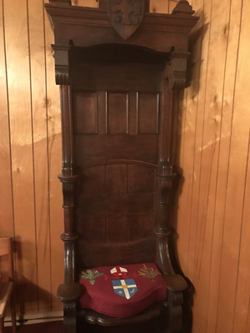
Historic
throne of the First Chair of the United Roman-Ruthenian Church, located
in the ex-cathedral and bearing the diocesan coat of arms of the former
Anglican
Diocese of the Southwest, which later was renamed the See of St.
Stephen and Coadjutorship of Rome and subsequently formed
part of the Holy Apostolic See of Sts. Peter, Andrew, Stephen, and Mark.
The active expression of our Roman heritage of Old Catholicism was brought to the forefront in 2011, and the Anglican Patriarchate was formally established and recognised the same year. In 2019, the Apostolic See of Saints Stephen and Mark was established through the joining of the See of St. Stephen (Coadjutorship of Rome) and the Anglo-Roman Metropolitan See of Aquileia, part of the Holy Roman Empire patrimony of the Church. Also in 2019, the United Roman-Ruthenian Church (under the name of its foundation at the time, the Anglican Rite Roman Catholic Church, Inc.) was admitted to special consultative status with the United Nations Economic and Social Council.
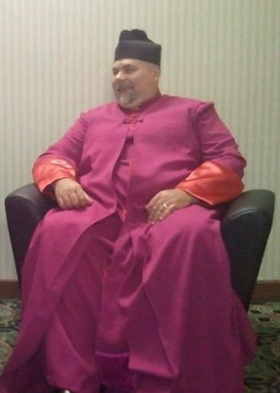
Msgr.
Douglas of Rome-Frankfurt as Pontifical Chamberlain and Master of the
Chamber
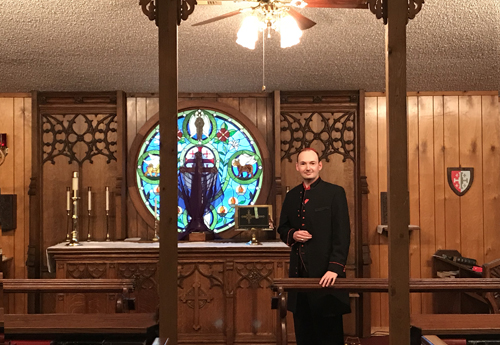
Pope Radislav (Rutherford)
visiting the Cathedral of St. Chad in San Antonio,
Texas, USA as a guest of church clergy and staff. The church of St.
Chad houses the throne that is recognised as the historic First Chair
of the United Roman-Ruthenian Church (see above). It is also the
cathedral of his
predecessor, Bishop Edwin Caudill, as Bishop of the Southwest, later
renamed the See of St. Stephen and subsequently became
the Diocese of Rome-Ruthenia.
See more about the Cathedral of St. Chad, Historic First Chair of the Holy Apostolic See.
Finally, the Eastern Orthodox and Oriental Orthodox heritage of our identity was brought into the forefront starting in 2020 with Byzantine Roman customs, in 2021 with the re-establishment of the Gallican Rite (a tradition in France and Spain with origins in Greece and Antioch now centred in Argentina and affiliated with the Merovingian Dynasty), and finally with the newly-compiled Gallo-Russo-Byzantine and Anglican-Byzantine Rites the following year. In 2022, the unification of our ethno-religious heritage was complete, and the dream had been realised, keeping with the wish of Our Lord Ut unum sint – that all may be one. In 2025, the central See was consecrated as the Holy Apostolic See of Sts. Peter, Andrew, Stephen, and Mark on the occasion of the 20th anniversary of the restoration of the Roman-Ruthenian dynasty, thus including the patron saints of the Prince-Bishop as Supreme Pontiff of the United Roman-Ruthenian Church.
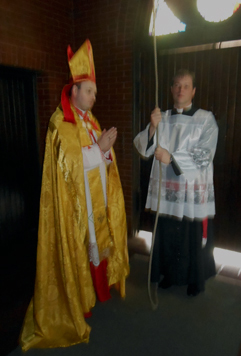
A newly-ordained Porter rings the church bell, part of the ordination ritual.
Over the years, the Holy Apostolic See and its various jurisdictions and organisations around the world established religious orders, built parishes and religious communities, grew chaplaincies servings the poor and vulnerable, expanded vocations, built service organisations to facilitate and promote humanitarian work, carried out significant historical preservation work, engaged in extensive diplomatic work, and published an substantial collection of liturgical, theological, and historical books. In the words of Pope Radislav I, "Our mission is the establishment of the Kingdom of God on earth. Our method is to empower people to build on their strengths, achieve their full potential, and do good in the world."
See more here.
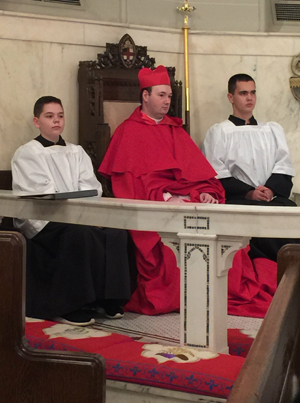
H.A.H.
the Prince-Bishop of Rome-Ruthenia, then as Cardinal Patriarch of St.
Stephen.
Succession and Authority
His Holiness Radislav I is 265th successor to St. Peter the Apostle in Apostolic Orthodox Latin Succession as Roman-Ruthenian Pope.
The United Roman-Ruthenian Church's principle lines of heritage and authority are:
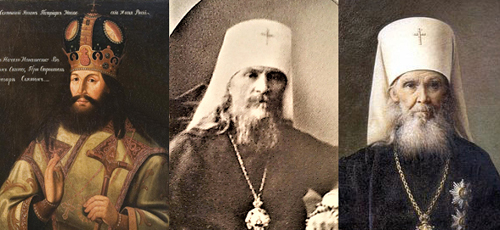
Nikon, Patriarch of Moscow; Evdokim,
Archbishop of Nizhny Novgorod
and the
Aleutians; Makariy,
Metropolitan of Moscow
Russian Orthodox
(from Nikon, Patriarch of Moscow and All Rus'; Sergius Starogrodsky, Metropolitan of Nizhni-Novgorod, Patriarch of Moscow and All Rus'); and Saint Archbishop Abdullah Aftimios Ofiesh
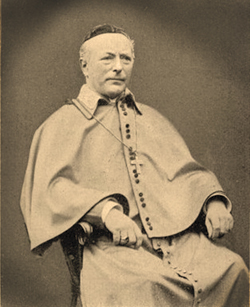
Gerardus
Gul, Archbishop of Utrecht (Old Catholic)
Syrian Antiochene
(from Mar Ignatius III, Syrian Orthodox Patriarch of Antioch)
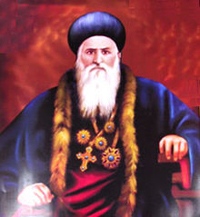
Mar
Ignatius Peter III, Patriarch of Antioch
Syrian Malabarese
(from Mar Ignatius Peter III, Patriarch of Antioch)
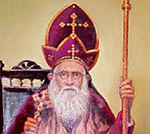
Mar
Julius
Syrian Gallican
Greek Orthodox
(from Damian I, Patriarch of Jerusalem)
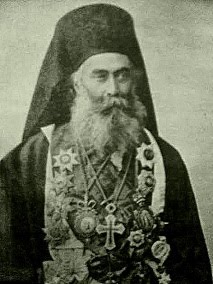
Damian I, Patriarch of Jerusalem
(Greek Orthodox)
Coptic Orthodox
(via Cyril VI, Pope of Alexandria)
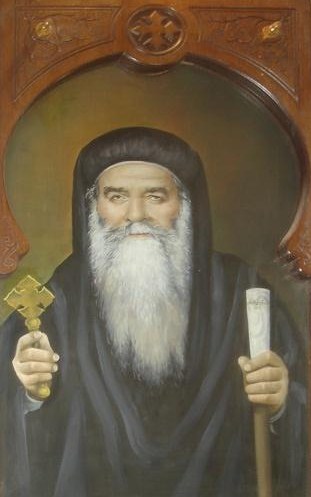
Cyril VI, Pope of
Alexandria
Syro Chaldean
(from Mar Shimum XVIII, Patriarch of Seleucia-Ctesiphon and Catholicos of the East; Mar Abdese-Antonios, Metropolitan of Malabar; and Mar Basileus, Metropolitan of India, Ceylon, Mylapore, Socotra, and Messina)
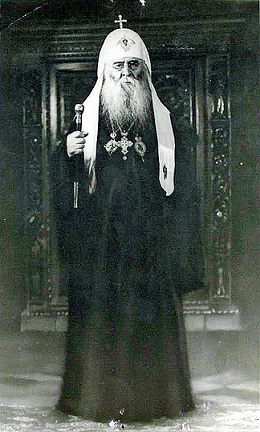
Sergei, Patriarch
of Moscow and all Rus'
Chaldean Uniate
(from Mar Emmanuel Thomas II, Patriarch of Babylon)
Armenian Uniate
(from Archbishop Charchorunian, consecreated under the reign of Patriarch Antonios Peter IX)
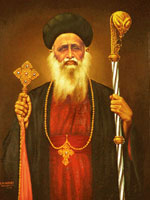
Mar
Athanasius
Greek Melkite Uniate
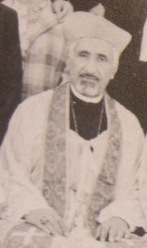
Antoine
Joseph Aneed, Exarch of the Greek Melkite Rite
in the
United
States of America,
Patriarch of the Byzantine Catholic and
Orthodox Church of the Americas
Russo-Syriac
American Orthodox Catholic Church
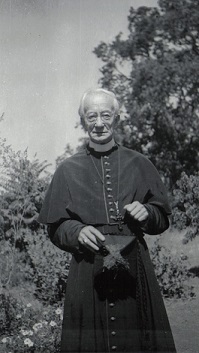
Edmond I, Prince-Abbot of San Luigi
African Orthodox Church
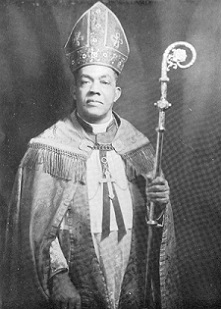
Metropolitan
Alexander I of the African Orthodox Church
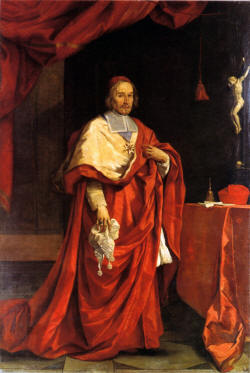
Cardinal
Barberini
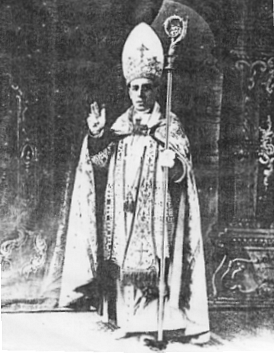
Archbishop Henry Carmel Carfora,
Primate of the North American Old Roman Catholic Church
Roman Catholic and Anglican Succession
The United Roman-Ruthenian Church's Roman Catholic and Anglican lines of succession may be seen at this page.
Temporal Succession of the United Roman-Ruthenian Church & Pontifical Imperial State
The temporal succession of the United Roman-Ruthenian Church may be seen at this page.
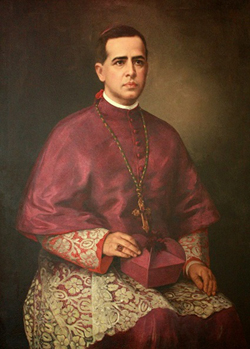
Joaquim Cardinal Arcoverde de
Albuquerque-Calvacanti, Archbishop of Rio de Janeiro, Brazil.
Read more about our vision, mission, and core values by following this link.
Canonical Married Bishops and ClergyREFERENCES AND FURTHER READING
Apostolic and Temporal
Succession of Radislav I. Pontifical Georgian Press.
2024.
Bartlett, R. The Making
of Europe: Conquest, Colonization and Cultural Change 950-1350.
Princeton University Press. 1993.
Binns, J. An
Introduction to the Christian Orthodox Churches. Cambridge
University Press. 2002.
Chalandon, F. Histoire
de la domination normande en Italie et en Sicile. A.
Picard. 1907.
Deffenbaugh v. Röm-Frankfurt, Ed.
Almanac of Würzburg. Pontifical Georgian Press. 2016-2024.
Dimnik, M. The
Dynasty of Chernigov, 1146–1246. Pontifical Institute of
Mediaeval Studies. 2004.
Erickson, J. The
Challenge of Our Past: Essays in Orthodox Church History and Canon Law.
St. Vladimir's Seminary Press. 1991.
Fennell, J. The Crisis
of Medieval Russia, 1200-1304. Longman. 1983.
Franklin, S., Shepard, J.
The Emergence of Rus 750-1200. Longman. 1996.
Gavaldá y Castro, Rubén and Arnaldo I. A. Miranda Tumbarello. Fons Honorum: compendio de
Derecho Nobiliario Europeo y Americano. Instituto
Heraldico de Buenos Aires. 2015.
Genealogy of the
House of Johnson-Roma-Rus’. Pontifical Georgian Press.
2024.
Ghisalberti, A. M.
Alberico di Ivrea: Signore del Piemonte. Tipografia
sociale. 1962.
Heritage and
Ecclesiastical Titles in the United Roman-Ruthenian Church.
Il Nunzio Romano-Ruteno. 2023.
Herrin, J. The
Formation of Christendom. Princeton University Press.
1989.
Inside the Unique
Governance of the United Roman-Ruthenian Church. Il Nunzio
Romano-Ruteno. 2023.
Logan, D. F. A
History of the Church in the Middle Ages. Routledge.
1992.
Magocsi, P. R. A
History of Ukraine. University of Toronto Press. 1996.
Martin, J. Medieval
Russia, 980-1584. Cambridge University Press. 1995.
McKitterick, R. The
Frankish Kingdoms under the Carolingians, 751–987. Longman.
1983.
Meyendorff, J. Imperial
Unity and Christian Divisions: The Church 450-680 A.D. St
Vladimir’s Seminary Press. 1989.
Ostrogorsky, G. History
of the Byzantine State. Rutgers University Press. 1969.
Papadakis, A. The
Christian East and the Rise of the Papacy. St Vladimir’s
Seminary Press. 1994.
Runciman, S. Byzantine
Civilization. Cambridge University Press. 1933.
Radislav I. Journey
of Faith. Pontifical Georgian Press. 2022.
Setton, K. M. The
Papacy and the Levant (1204-1571). American Philosophical
Society. 1976.
Thomson, F. J. The
Reception of Byzantine Culture in Mediaeval Russia.
Variorum. 1999.
Ware, T. The Orthodox
Church. Penguin Books link.
1997.
Wickham, C. The
Inheritance of Rome: A History of Europe from 400 to 1000. Penguin
Books. 2009.
